On making change
by Tom Hockenhull, Curator: Medals and Modern Money, The British Museum
The 50th anniversary of decimalisation in February 2021 seemed like a timely opportunity to publish a new account of how it happened, and at the start of 2020 I commenced work on a book and British Museum exhibition, Making Change. Since 2006 the Museum has been home to the Christopher Ironside archive. Consisting of almost five-hundred drawings, plaster models and photographs, this material mostly relates to his designs for the new UK decimal reverses, a project that occupied him for much of the 1960s. But to complete the story it was essential that I should head to the Royal Mint Museum, library and archive.
I had two weeks available in my diary to conduct this research – January or April. Had I postponed until April the Covid lockdown would have undoubtedly caused the project to be delayed, and perhaps even cancelled altogether. Without any foresight whatsoever I selected the former, arriving at Llantrisant on a cold, windy and almost apocalyptically wet Tuesday in January 2020, where I nevertheless received the warmest of welcomes from Mint Museum staff. After a hot cup of tea and a biscuit I set to work going through what they had.
One underestimates the extent of the Royal Mint Museum’s records at their peril. Documents that may have seemed of peripheral relevance at the time have been nevertheless carefully preserved and archived, providing a blessing to researchers today. Of foremost significance are the minutes of the Royal Mint Advisory Committee, or RMAC. These record, often in exacting detail, all the decisions taken to formulate the designs of the coins. They are complemented by an extensive archive of correspondence between its members, Mint reports and press releases, drawings, plaster models, dies and trial/pattern coins.
The decimal reverse designs may be roughly split in two – those that preceded the public competition held in 1966, and those that came after. Dividing them are the 800 or so submissions to the competition, retained as photocopies – the originals were returned to the artists. Christopher Ironside once remarked that designing the coins was like a jigsaw with thousands of solutions. This would be an apt analogy for reconstructing the chronology of the decimal reverses, such were the number of people concerned and decisions made over a period of almost ten years. I have selected five documents from among the thousands in the Mint Museum’s archive that relate to decimalisation, if not to give a full account then to provide a flavour for the story and of the personalities involved:
1. In this undated document, probably from the end of 1963, the RMAC expressed their preferences for three design options by Ironside – A, B or C. One can see that Prince Philip (‘H.R.H’) sided with John Betjemen and others in selecting option B. Decimal designs featuring Britannia proved to be a perpetual headache, for both Ironside and the RMAC – numerous ideas were formulated before being rejected as unsuitable.
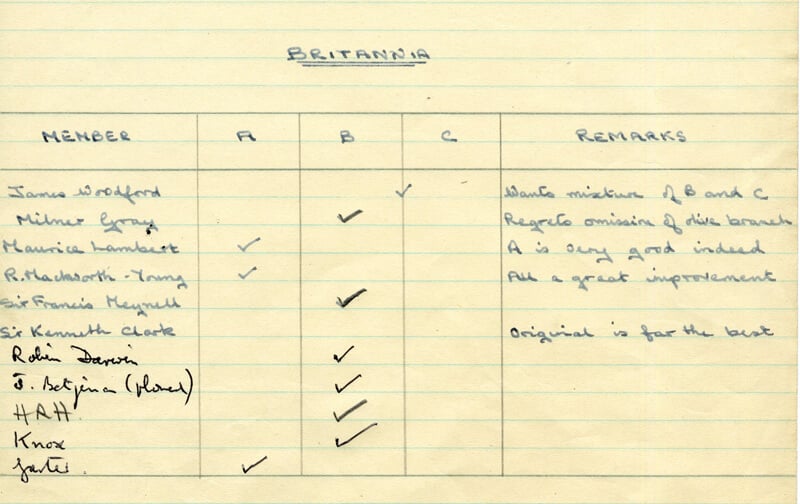
2. As President of the RMAC, Prince Philip emerges as an energetic and humorous presence in his correspondence with other members of the Committee. Although characteristically blunt and outspoken, he clearly took his role seriously. In this note to Jack James (Deputy Master of the Mint), dictated shortly after the government’s announcement on decimalisation in March 1966, he makes reference to the penny vs cent debate that continued to rumble.
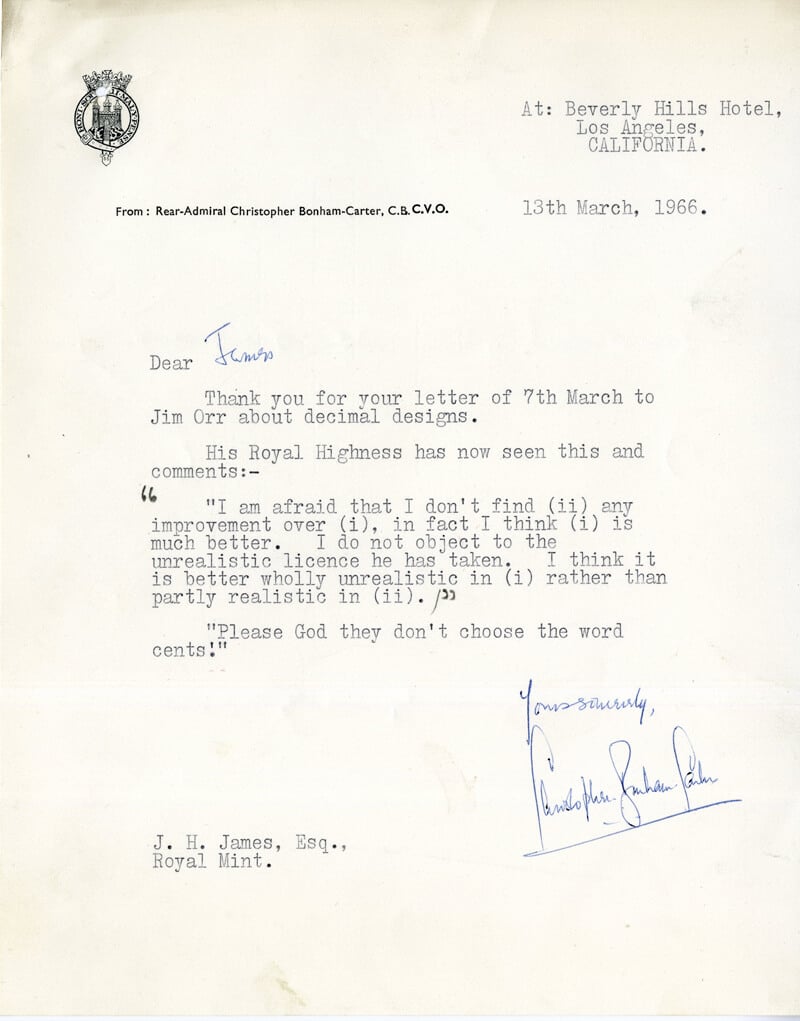
3. In July 1966 Cabinet Ministers were shown samples of coins designed by Ironside, but their response was less than enthusiastic. This led to a public competition organised in parallel to a competition for invited artists. One of the most prolific entrants was Sir Charles Wheeler, President of the Royal Academy. He submitted dozens of designs to the competition but his efforts were in vain – the RMAC selected Christopher Ironside, who had submitted an entirely fresh set of designs, as the winner.
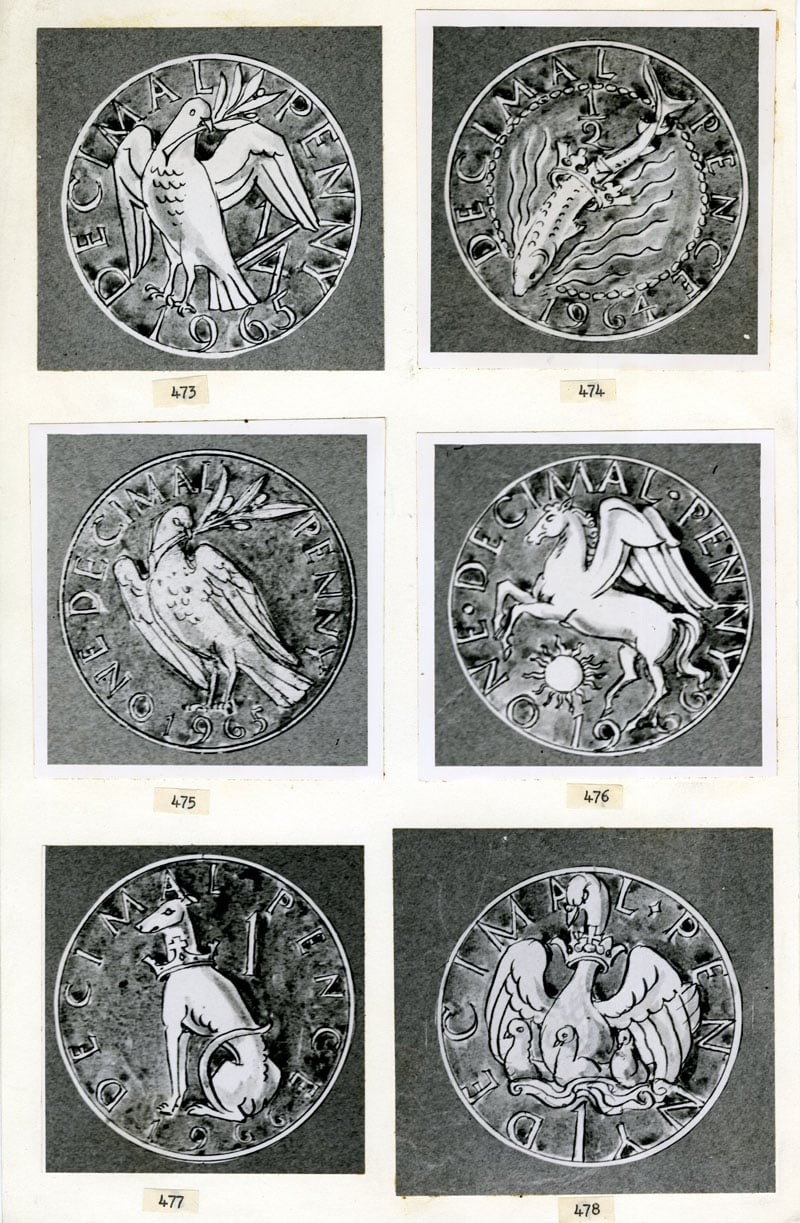
4. Announcing the RMAC’s decision on the design competition in a letter of January 1967 to James Callaghan, Chancellor of the Exchequer, Prince Philip details why the Committee had selected Ironside as the winner. Even in an official letter His Highness couldn’t resist commenting about the coinages of other European nations.
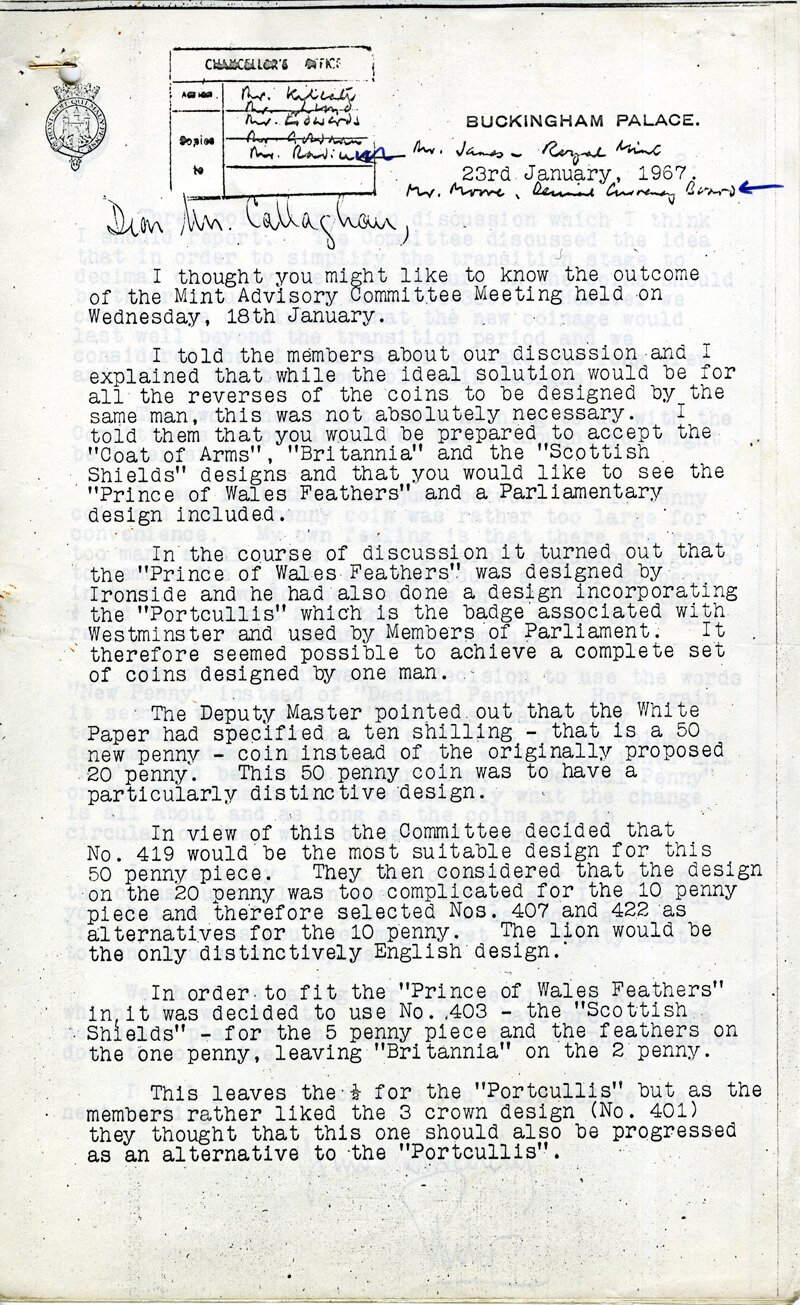
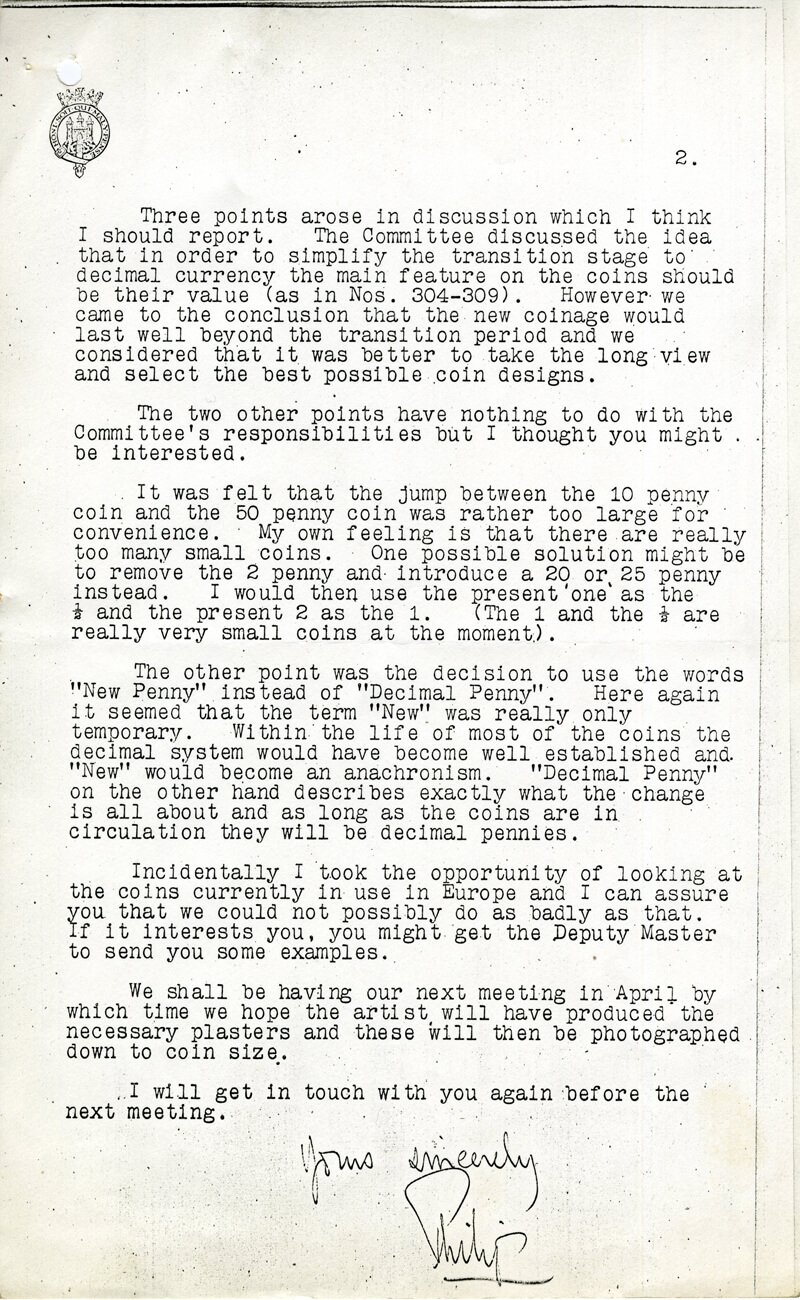
5. The 50p design was the last to fall into place, not least owing to its unusual shape which required extensive development and testing. This outline drawing from about 1968 imagines how Arnold Machin’s portrait of Her Late Majesty Queen Elizabeth II would work with the inscription when placed on a seven-sided coin.
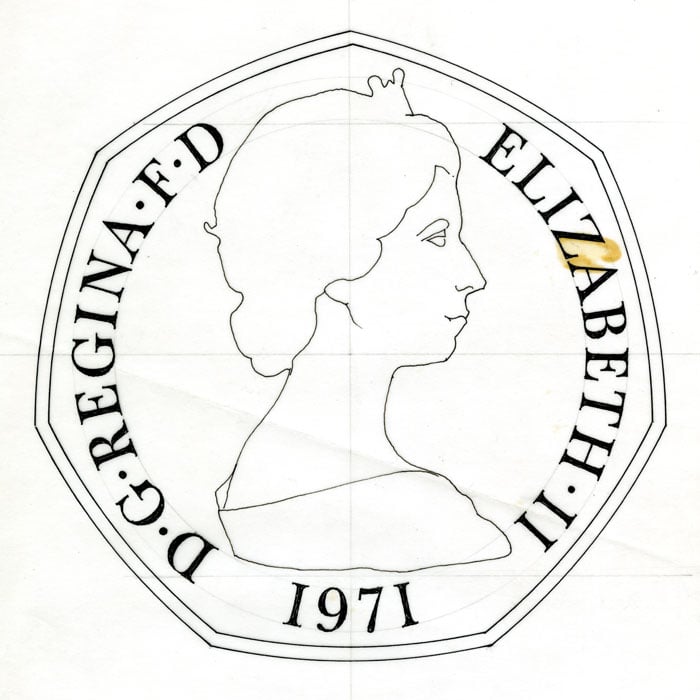
Making Change: the Decimalisation of Britain’s Currency (London: Spink and the British Museum) is out now.
